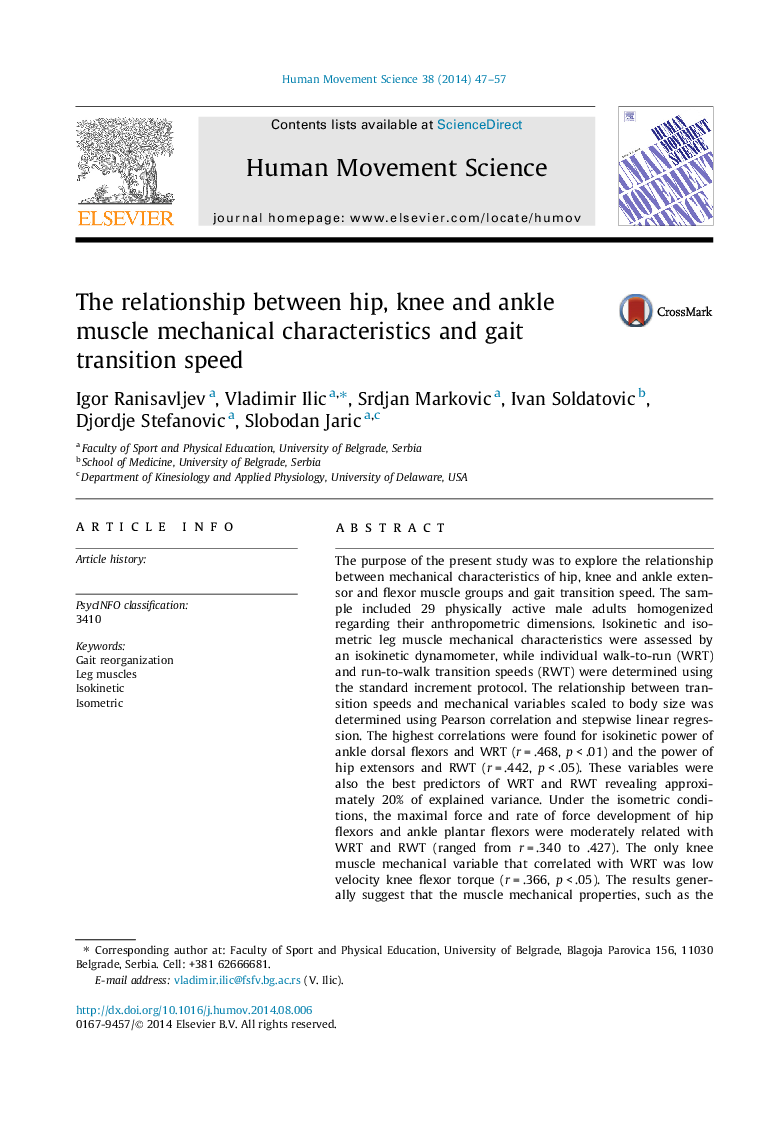| کد مقاله | کد نشریه | سال انتشار | مقاله انگلیسی | نسخه تمام متن |
|---|---|---|---|---|
| 7292245 | 1474227 | 2014 | 11 صفحه PDF | دانلود رایگان |
عنوان انگلیسی مقاله ISI
The relationship between hip, knee and ankle muscle mechanical characteristics and gait transition speed
ترجمه فارسی عنوان
ارتباط بین ویژگی های مکانیکی عضله بازو، زانو و مچ پا و سرعت گذار قدم زدن
دانلود مقاله + سفارش ترجمه
دانلود مقاله ISI انگلیسی
رایگان برای ایرانیان
موضوعات مرتبط
علوم زیستی و بیوفناوری
علم عصب شناسی
علوم اعصاب شناختی
چکیده انگلیسی
The purpose of the present study was to explore the relationship between mechanical characteristics of hip, knee and ankle extensor and flexor muscle groups and gait transition speed. The sample included 29 physically active male adults homogenized regarding their anthropometric dimensions. Isokinetic and isometric leg muscle mechanical characteristics were assessed by an isokinetic dynamometer, while individual walk-to-run (WRT) and run-to-walk transition speeds (RWT) were determined using the standard increment protocol. The relationship between transition speeds and mechanical variables scaled to body size was determined using Pearson correlation and stepwise linear regression. The highest correlations were found for isokinetic power of ankle dorsal flexors and WRT (r = .468, p < .01) and the power of hip extensors and RWT (r = .442, p < .05). These variables were also the best predictors of WRT and RWT revealing approximately 20% of explained variance. Under the isometric conditions, the maximal force and rate of force development of hip flexors and ankle plantar flexors were moderately related with WRT and RWT (ranged from r = .340 to .427). The only knee muscle mechanical variable that correlated with WRT was low velocity knee flexor torque (r = .366, p < .05). The results generally suggest that the muscle mechanical properties, such as the power of ankle dorsal flexors and hip extensors, influence values of WRT and RWT.
ناشر
Database: Elsevier - ScienceDirect (ساینس دایرکت)
Journal: Human Movement Science - Volume 38, December 2014, Pages 47-57
Journal: Human Movement Science - Volume 38, December 2014, Pages 47-57
نویسندگان
Igor Ranisavljev, Vladimir Ilic, Srdjan Markovic, Ivan Soldatovic, Djordje Stefanovic, Slobodan Jaric,
